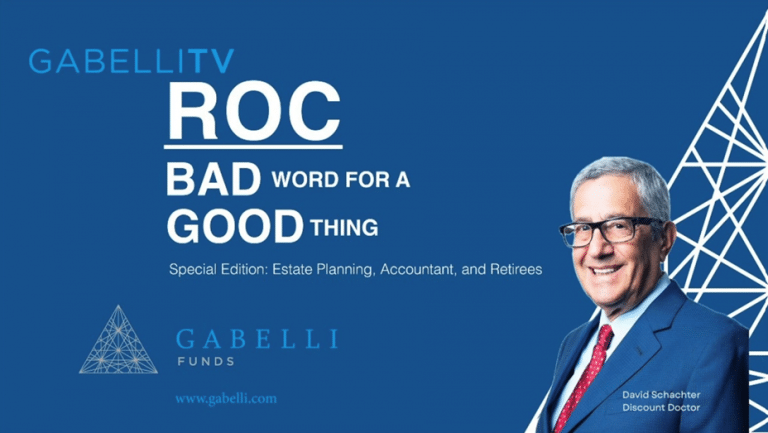The R-Word
To Our Valued Clients,
What a difference one quarter, let alone one year, can make. Markets entered 2023 battered and bruised. A war in Ukraine and a war on inflation threatened to wreck the global economy. Cracks emerged as a succession of banks (Silicon Valley, Signature, First Republic, Credit Suisse) failed. In keeping with recent history, Congress took us to the precipice before agreeing to more spending. Tragically, another front has opened in the battle against the axis of Russia/Iran/China. Yet, notwithstanding signs of economic deceleration, inflation appears headed south while employment remains steady. Remarkably, the odds that the Federal Reserve pulls off a soft landing have grown; as Chair Powell noted in his most recent testimony: “so far, so good”.
The obvious interpretation of our chosen title would be “Recession” – it is what we and most other market participants have long anticipated. No, we have not repealed the business cycle. Some economists predict contraction in 2024, but the probability and severity of such an event has likely decreased of late. Indeed, the R-Word could mean “Retracement” as 10-year Treasuries have returned to 3.8% after grazing 5% in October and CPI has retreated to 3.1% after peaking at 9.1% in June 2022.
The major market indices performed well in 2023 with the S&P 500 up 26%, albeit led by a narrow list of stocks (the so-called Magnificent Seven) which Recouped their 2022 losses. However, a Rotation in market leadership may have begun as growing investor confidence in the economic picture bolsters smaller capitalization and traditional value stocks. In our view, the market Rebound embodies Resilience – our R-Word for 2023 – at the systemic and individual level. We may have underestimated this dynamic in 2023 but think it will play an important role in 2024.
The Political Economics of Right Now
The world has experienced more than its fair share of 100-year events in recent years. In reality, a burgeoning great power conflict, the forces of de-globalization and economic alienation and social fragmentation took decades to build. The outcome of these shifts is almost surely reduced prosperity and structurally higher inflation. What may be more difficult for the market to discount is the erosion of confidence in the presiding liberal economic order. Although a global phenomenon, the US will enjoy a front seat to this clash with the upcoming election. This unfolds against a record $34 trillion national debt (120%+ of GDP) rolling over at much higher rates. Net interest on our debt for the fiscal year ended September 2024 will have more than doubled from 2020 to approximately $800 billion, the second largest budget item after social security, crowding out private investment and underpinning inflation/currency debasement. While depressing, we have seen far worse. Under the right leadership, these issues are addressable.
On that note, leadership at the Federal Reserve may have learned from the past mistake of staying tight for too long by signaling a desire to cut rates ahead of significant economic weakness. Leading indicators such as the PMI, corporate results and commentary suggest economic deceleration. Inflation and a pandemic-bred higher propensity to spend have largely depleted excess consumer pandemic savings. More recently, however, lower energy costs, steady hours worked and reflated asset prices have supported consumption. Infrastructure and re-shoring projects should continue to bolster corporate investment and government expenditures (over 30% of GDP). Taken together we think this puts the US on track for a “softish” landing in 2024 with an uptick in unemployment and below trend growth. Absent a geopolitical twist, oil shock or systemic financial crisis, we do not anticipate anything approaching the severity of 2008-09. Over the medium term, we have termed our inflation concerns the “Paxlovid Effect” after the COVID treatment’s propensity to result in bounce-back cases of the disease. Will permissive monetary policy again seed a return to inflation after emerging from an economic air pocket? Surveys indicate inflation expectations remain anchored; that may be a problem for another day as growth is the nearest wall of worry to hurdle. Resilience is on our side.
Mr. Market
Price x Earnings
Last year’s letter focused on the relationship between inflation, interest rates and exchange rates. In short, higher yielding risk-free Treasury securities led to greater return requirements/lower starting prices for risk assets including stocks, bonds and real estate. Multiples, a shortcut for the present value of future cash flows, reflected this change, compressing four turns from 2021 through mid-2023. Fed dovishness led to the current 20x multiple, as a whole somewhere in the range of fair when compared with history. Higher costs and tougher comparisons may pressure corporate earnings early in 2024. To continue the market’s path upward, multiples may need to continue their expansion, anticipating lower rates and a recovery in earnings later in 2024. Although we give little credence to market lore such as the hemline or NFL theories, the election year effect is well documented and, if one believes political figures will pull all levers at their disposal to retain power, has some basis in reality. As such, it is worth remembering that the market has risen in 83% of presidential election years versus 70% for all years.

As any consumer of financial media knows, the Mag 7 dominated 2023 returns, accounting for nearly 30% of the weight of the S&P 500 and 16 points of its total return. The Mag 7 checked many boxes: fortress balance sheets; secular growth via AI, direct-to-consumer and sustainability; cost cutting opportunities; and relatively cheap valuations. Arguably, all but the latter remain true today. Why bother doing the work on other less liquid names? While idiosyncratic challenges (and, to be fair, opportunities) grow at each of the Mag 7, we are not predicting their downfall. However, the historic valuation dispersion between mega and smaller capitalization companies – a six turn multiple difference and a Mag 7 valued at 3x the entire Russell 2000 – makes doing the work especially worthwhile. By late December, the market began broadening out; we think that will continue. In a soft landing/lower rate environment, smaller caps may be the ultimate Resilience play.
Your Portfolio
A diverse group of companies contributed to returns in 2023. Cyclicals – particularly those exposed to infrastructure and re-shoring spending – were strong. These include crane manufacturer Manitowoc (+82%), forklift maker Hyster-Yale (+151%) and providers of valves such as Flowserve (+37%) and Circor (+134%), the latter acquired by KKR in a competitive process. Quasi-utilities Republic Services (trash, +29%) and Comcast (broadband, +29%) held up well. Two likely takeover targets responded positively to catalysts: long-time holding UScellular (+99%) announced it was exploring strategic alternatives while Braves Holdings’ (+31%) separation from the Liberty tracker group paves the way for a private buyer in a hot sports team market. Finally, BellRing Brands (+116%) remained on-trend as a leader in protein shakes, leaving it poised to benefit from the nutritional support required by GLP-1 weight loss drugs and from a potential acquisition after the two-year anniversary of its March 2022 spin-off from Post Holdings.
Detractors from performance took more discrete forms. The market punished companies whose stressed balance sheets left them exposed to tighter financial conditions. This exacerbated the secular challenges facing media companies Paramount (+2%) and DISH Network (-59%). Speculation swirls that Paramount and controlling shareholder National Amusements could seek relief via piecemeal sale or strategic partnership/investment; meanwhile, DISH lengthened its runway for deploying a fourth national wireless service by merging with corporate cousin Echostar. After outperforming in 2022, lower crop prices hit companies touching the agricultural ecosystem such as Deere (-6%) and CNHI (- 22%). Finally, a pandemic consumption hangover, higher costs and fear of the impact of GLP-1s unbalanced consumer staples including General Mills (-20%), Kraft Heinz (-5%) and Campbell Soup (-21%). However, we believe these companies should ballast portfolios in a softer economic environment.
Our Playbook
We remain committed to the Private Market Value with a Catalyst™ methodology rooted in bottom-up research upon which our firm was founded forty-six years ago. We generally seek to identify companies with: (a) sustainable competitive advantages; (b) operated by properly aligned and adaptable managements; and most importantly (c) a margin of safety that accounts for the predictability of corporate cash flows and the probability and proximity of the occurrence of a catalyst. Historically we have deployed this strategy most effectively among small and mid-sized companies not well covered by Wall Street. As discussed above, we think the small and unloved may be returning to relative favor.
Deals, Deals, Deals
Understanding financial engineering and deal dynamics has been an extra source of return for portfolios. Unfortunately, economic and regulatory uncertainty as well as higher borrowing costs depressed M&A again in 2023. Post-peak rates and necessary consolidation in certain industries like media, energy and banking should lead to a more robust 2024. We are monitoring several pre-deal situations including the aforementioned UScellular, Braves, BellRing and Paramount as well as financial engineering candidates Vivendi, Liberty Global and Campbell Soup. The prospect of a change in administration could forestall or accelerate transactions depending upon the industry; irrespective of the landscape after November 2024, Microsoft’s successful acquisition of Activision could tempt corporates to try their fate even in front of an activist Justice Department.
Secular Observations
We typically organize our research around certain industry themes (recall the Graying of the Car Population, Body Parts, etc.). Below we summarize a few salient dynamics, some of which are the subject of current investment, others the subject of additional research:
- Re-shoring: Political tensions with China, political debts to voters and supply chain weaknesses exposed by COVID have encouraged a US re-industrialization. Beneficiaries include providers of labor saving automation technologies and participants in the nearby Mexican economy.
- Resource scarcity: Pressure on water and agriculture exerted by climate change and population growth and a need to secure friendly sources of oil and strategic minerals favor providers of water management, precision farming and resource extraction technologies.
- Rearmament: While Congress battles over a larger defense authorization, ongoing and potential wars at some point will require investment. On a more positive and peaceful note, expanding global travel should support the growth of the commercial aircraft ecosystem.
- Experiential economy: The pandemic seems to have reinforced a preference on the part of younger consumers for experiences over goods. Live entertainment and travel stand out in a world moving to the metaverse. We view sports franchises as durable storers of value.
- Artificial intelligence: We have admittedly buried the lede here. AI will undoubtedly transform almost all aspects of life in ways we are only beginning to comprehend. While certain members of the Mag 7 may well lead in AI, the technology may pose risks for established workflows. We are busy identifying winners, losers and opportunities for us to enhance our own processes.
- Connectivity. AI and streaming are just two technologies that underpin the importance of fast, reliable connections. While wireless/satellite has made broadband inroads, physics and economics suggest wired connections will remain critical for decades.
- Infrastructure. Supported by the $500 billion Inflation Reduction Act, efforts to harden the grid, increase clean energy production and improve transportation (20th century connectivity) in the name of sustainability are likely to survive a change in administration. Equipment providers and utilities are just starting to see the benefits of these projects.
- Weight loss miracle drugs. The seemingly sudden emergence of Ozempic-type drugs pressured food and beverage stocks in 2023. The prospect of thinner Americans presents risk (many overstated) and opportunities (nutritional support, healthcare providers).
Concluding Thoughts
We entertained several candidates for 2023 Person of the Year. Time magazine’s winner Taylor Swift remains a cultural phenomenon whose Eras tour contributed $6 billion in value to the economy. Although not a uniform opinion, Jerome Powell has thus far played market expectations almost perfectly. However, our vote goes to you – the consumer. Despite the noise on television and on the socials, most Americans tend to their lives via work and time with friends and family intent on improving themselves and our world. We share that goal and focus on the fundamentals no matter the political and economic climate. For better or worse, we may hear much more about Resilience in 2024. For now, we thank you for entrusting a portion of your assets with us and wish you and your families a happy, healthy new year.

ONE CORPORATE CENTER RYE, NY 10580 Gabelli Funds TEL (914) 921-5000
This letter was prepared by Kevin V. Dreyer and Christopher J. Marangi. The examples cited herein are based on public information and we make no representations regarding their accuracy or usefulness as precedent. The views are subject to change at any time based on market and other conditions. The information in this letter represent the opinions of the individuals as of the date hereof and is not intended to be a forecast of future events, a guarantee of future results, or investments advice. The views expressed may differ from other Research Analysts, Portfolio Managers, or of the Firm as a whole.
As of September 30, 2023, affiliates of GAMCO Investors, Inc. beneficially owned 31.6% of Braves Class A and 5.5% of Braves Class C, 11.7% of Paramount Class A and less than 1% of Paramount Class B, 7.9% of Hyster-Yale, 4.1% of UScellular, 2.2% of Flowserve, 1.3% of Manitowac, 1.2% of CNHI, and less than 1% of all companies mentioned.








